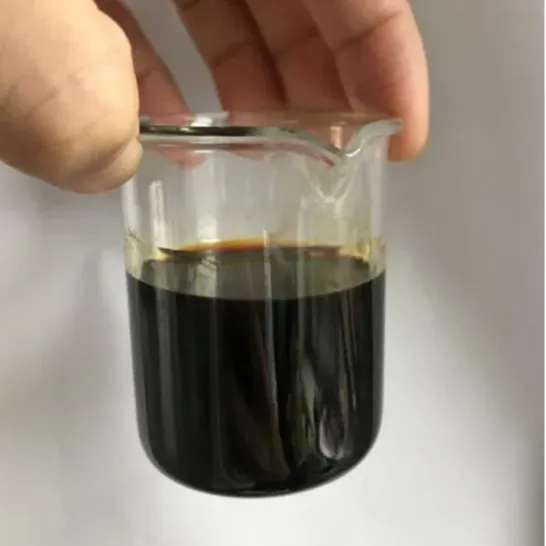
Nov . 21, 2024 06:04 Back to list
pyraclostrobin boscalid fungicide
The Role of Pyraclostrobin and Boscalid in Modern Agriculture A Dual Approach to Fungal Control
In the realm of modern agriculture, maintaining crop health is paramount for ensuring food security and reducing losses due to pests and diseases. One of the critical challenges faced by farmers is the management of fungal pathogens, which can lead to significant yield reductions. Among the various strategies to combat these threats, the use of fungicides has become indispensable. Two prominent fungicides that have garnered attention for their effectiveness are Pyraclostrobin and Boscalid. Each operates through unique mechanisms, and together they form a powerful tool in the fight against fungal diseases.
Understanding Pyraclostrobin
Pyraclostrobin is a member of the strobilurin class of fungicides. It functions primarily through inhibition of mitochondrial respiration, targeting the enzyme complex III in the electron transport chain. This mode of action results in disrupted energy production within fungal cells, ultimately leading to cell death. Pyraclostrobin is characterized by its broad-spectrum activity, making it effective against a wide range of fungal pathogens, including those responsible for diseases like powdery mildew, leaf spots, and blights.
One of the key benefits of Pyraclostrobin is its ability to enhance plant health beyond mere pathogen control. Studies have shown that it can stimulate plant growth and improve overall vigor. This is particularly important, as robust plants are better equipped to withstand environmental stresses and can yield more productive harvests. Furthermore, Pyraclostrobin has a relatively low toxicity profile in terms of its effects on non-target organisms, including beneficial insects, making it a favorable choice for integrated pest management (IPM) strategies.
Exploring Boscalid
Boscalid, on the other hand, belongs to the class of fungicides known as carboxamides. It operates by inhibiting a different target within the fungal cell—specifically, the enzyme succinate dehydrogenase (SDH) within the Krebs cycle. By disrupting this critical metabolic pathway, Boscalid impedes fungal growth and reproduction. Like Pyraclostrobin, Boscalid also exhibits broad-spectrum efficacy against various plant pathogens, including those that cause root rot and wilt diseases.
pyraclostrobin boscalid fungicide

One of the notable attributes of Boscalid is its residual activity. When applied to crops, Boscalid maintains its effectiveness over an extended period, offering infrequent application requirements for farmers. This characteristic not only saves time and labor but also minimizes the risk of developing resistance in fungal populations. Moreover, Boscalid has shown compatibility with other fungicides, allowing for tank-mixing strategies that can enhance disease control and broaden the spectrum of activity.
Synergistic Effects and Resistance Management
The combination of Pyraclostrobin and Boscalid provides a synergistic approach to disease management. By utilizing two different modes of action, farmers can effectively reduce the risk of resistance development among target pathogens. Resistance is a significant concern in fungicide applications, as over-reliance on a single active ingredient can lead to diminished efficacy over time. The dual application of these fungicides not only mitigates this risk but also enables more effective control of diseases that may be problematic if treated with a single mode of action.
Employing a rotation of Pyraclostrobin and Boscalid can also diversify the pressure exerted on fungal populations, encouraging them to remain vulnerable and susceptible to treatment. This strategy is a cornerstone of sustainable agriculture and is aligned with practices that promote the health of agroecosystems while maximizing crop yields.
Conclusion
In conclusion, Pyraclostrobin and Boscalid represent a potent alliance in the field of agricultural fungicides. Their distinct mechanisms of action, combined with their broad-spectrum effectiveness and low toxicity, make them invaluable tools for farmers aiming to protect their crops from destructive fungal diseases. By adopting integrated pest management strategies that leverage these fungicides, growers can ensure the health and productivity of their fields, contributing to broader goals of sustainability and food security. As research continues to evolve in the field of plant protection, the importance of such compounds remains undisputed, reinforcing the need for responsible and strategic use in modern agriculture.
-
Azoxystrobin: Broad-Spectrum Fungicide Solutions
NewsAug.11,2025
-
Best EPA Boscalid: Superior Crop Fungicide for Max Yields
NewsAug.11,2025
-
Best Willowood Imidacloprid: Superior Pest Control Solutions
NewsAug.10,2025
-
Best EPA Boscalid Fungicide: Ultimate Crop Protection
NewsAug.09,2025
-
Cyprodinil Fungicide: Broad-Spectrum Crop Protection
NewsAug.08,2025
-
Tembotrione Herbicide: Advanced 8% OD for Broad Spectrum
NewsAug.07,2025
